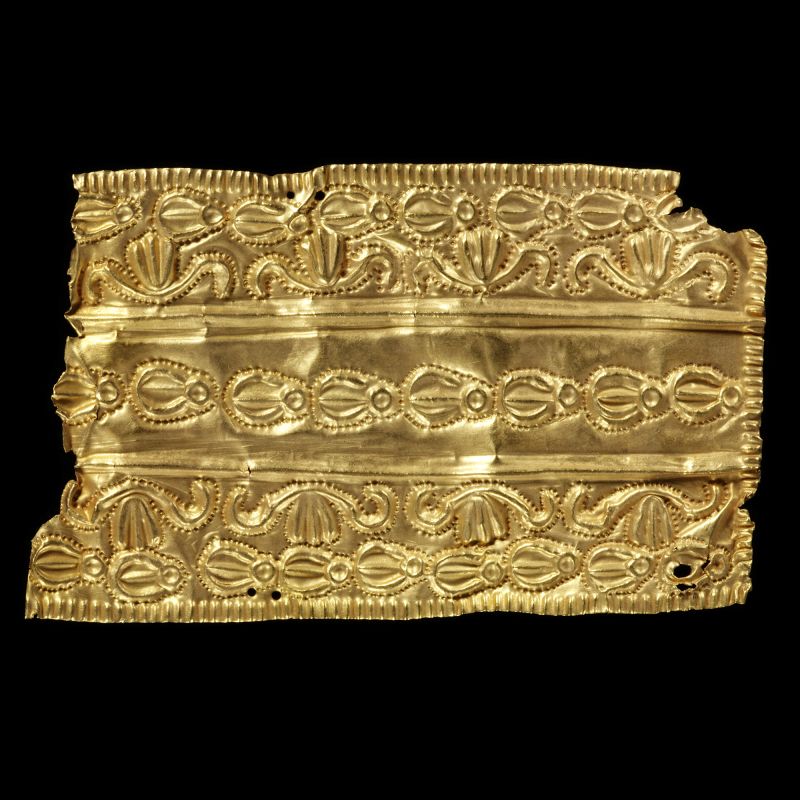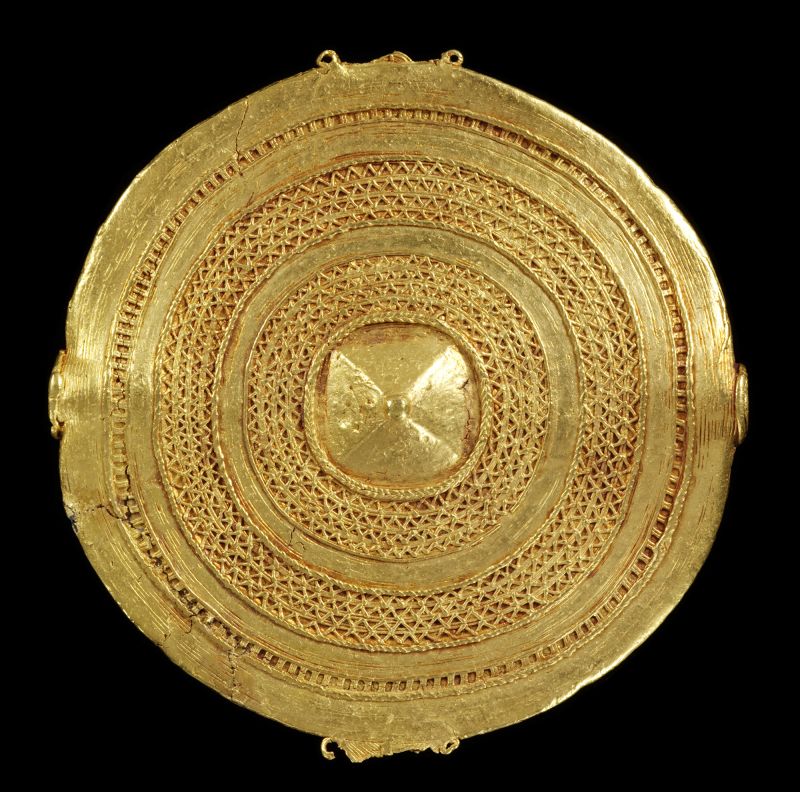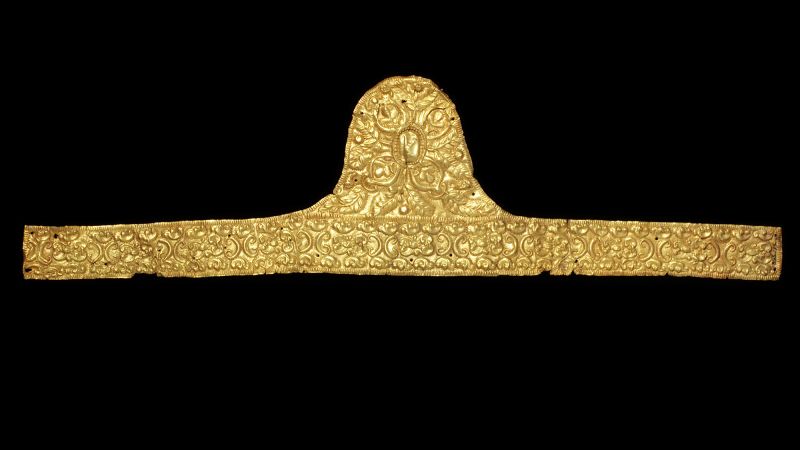
Restoring Cultural Heritage: UK to Return Looted Artifacts to Ghana

The United Kingdom has agreed to return gold and silver artifacts looted from Ghana in the 19th century, marking a significant step in the restoration of cultural heritage.
Historic Return of Artifacts
In a historic move, the United Kingdom has reached a long-term loan agreement with Ghana for the return of gold and silver artifacts looted in the 19th century. The artifacts, including 13 pieces of Asante royal regalia, were looted during the Anglo-Asante wars and some were part of an indemnity payment forcibly extracted from the Asantehene, or Asante king. Others were sold at auction and ended up in private collections and museums worldwide.
A gold ornament with three bands of decoration.
Both the British Museum and the Victoria and Albert Museum (V&A) will be sending items related to the Asante royal court to Ghana, where they will be displayed at the Manhyia Palace Museum in Kumasi. This marks a significant step in the restoration of cultural heritage and the acknowledgment of the impact of colonialism on African nations.
Symbolism and Significance of the Artifacts
The returned artifacts, which include a small gold ornament in the shape of a sankuo and an ornament in the form of an eagle, hold deep symbolism and significance in Asante culture. Since the foundation of the Asante empire, gold has been central to Asante identity, spirituality, and economic stability. The palace in Kumasi became the focal point for a lucrative international gold trade, reflecting the historical and cultural importance of these artifacts.
A cast gold badge.
These artifacts are not merely valuable in material terms; they carry the spirits of former Asante kings and their decoration holds a visual lexicon known to those familiar with the culture. The return of these items to Ghana after 150 years will provide an opportunity for the public to connect with their cultural heritage and history, fostering a sense of pride and identity among the Ghanaian people.
Global Implications and Future Prospects
The decision to return the looted artifacts comes at a time of increasing global awareness and calls for the repatriation of cultural property taken during colonial periods. It reflects a growing recognition of the need to address historical injustices and restore the cultural heritage of oppressed communities. This partnership between the UK museums and the Manhyia Palace Museum in Ghana sets a positive precedent for future collaborations and the repatriation of cultural artifacts to their countries of origin.
The items will be displayed in Ghana on a long-term loan.
The agreement also resonates with broader discussions on the repatriation of African cultural property held in European museums. The report commissioned by French President Emmanuel Macron, which highlighted that 90% of African cultural property resides in European museums, underscores the urgency of returning these artifacts to their rightful places. While challenges and controversies persist, the return of the looted artifacts to Ghana signifies a step towards reconciliation and the restoration of cultural heritage on a global scale.









